Tag: welder college
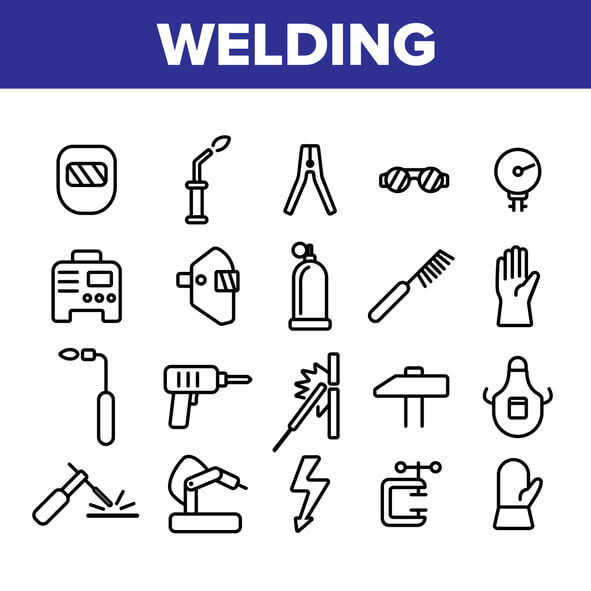
Precision and clarity of communication are central to the success of any welding process. Welding symbols are handy pointers that ensure seamless communication between designers, engineers, and welders on any project.
Welding symbols are graphic representations that convey essential information about the type and quality of welds required in a blueprint. They guide welders through the complexities of a project and ensure that the final product meets the specified standards. After completing welder training, understanding and interpreting these symbols is not just a skill but a key to unlocking a welder’s true potential. Here’s why these symbols are indispensable after completing welder training.
The Structure of a Basic Welding Symbol
The welding symbol has three key elements: arrow, reference line, and tail. The arrow, pointing to the weld location on the workpiece, gives clear direction for execution. The reference line, acting as a baseline for the arrow, serves as a foundation, aiding in positioning other symbols. The tail extends from the reference line, conveying vital details about the welding process, such as weld type and specifications. Together, these elements provide essential information for accurate and successful weld execution.
Clarity in Communication and Precision in Execution
Imagine a scenario where a welder receives a set of blueprints without any welding symbols. It would be like navigating through uncharted territory without a map. Welding symbols provide a standardized method of communication, eliminating ambiguity and ensuring that every member of the welding team is on the same page. This clarity is vital for efficiency, as it reduces the likelihood of errors and rework, ultimately saving time and resources.
Welder training equips individuals with the technical skills required for various welding techniques. However, welding symbols often outline the specifics of a welding project. These symbols guide welders in selecting the right welding processes, filler materials, and other parameters crucial to the precision execution of the weld. This precision contributes to the final product’s structural integrity and enhances the welder’s reputation for delivering quality work.

Welder Training Emphasizes Compliance With Industry Standards
As our welder courses emphasize, adhering to established standards in the welding industry is non-negotiable. Welding symbols bridge the design phase and fabrication, ensuring the welds meet industry codes and standards. Welder training teaches the fundamentals, but welding symbols provide the specific details needed to comply with regulations and certifications. This adherence is vital for welders working in aerospace, automotive, and construction sectors, where precision and safety are paramount.
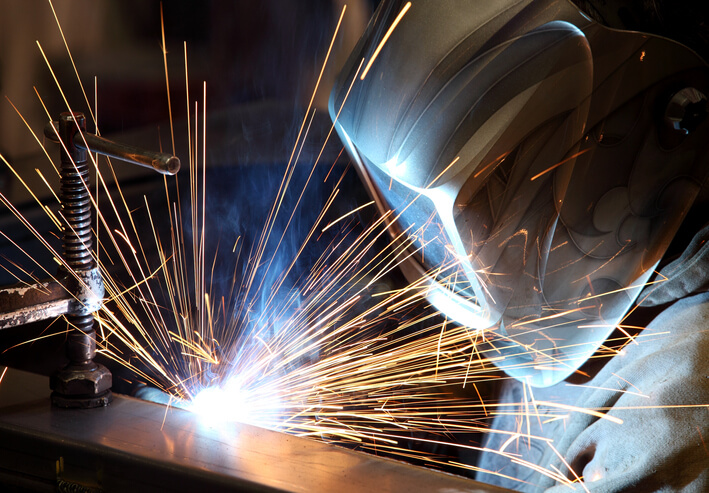
Efficient Problem-solving and Professional Growth Opportunities
During a welding project, challenges and unexpected issues can arise. Welding symbols empower welders to make informed decisions and solve problems efficiently. Whether it’s adjusting welding parameters, choosing appropriate techniques, or understanding the criticality of a particular weld, the ability to decipher welding symbols enables welders to navigate complexities confidently and competently.
After completing welder training, continual professional development is essential. Proficiency in interpreting welding symbols opens doors to advanced certifications and specialized roles within the welding industry. Welders who can seamlessly translate the language of welding symbols demonstrate a commitment to excellence and stand out in a competitive field, paving the way for career advancement and diverse opportunities.
Are you looking for a world-class welder college?
Contact NATS for more information.
Considering Welder Training? 3 Reasons Why Your Skills Are In Such High Demand
October 06, 2023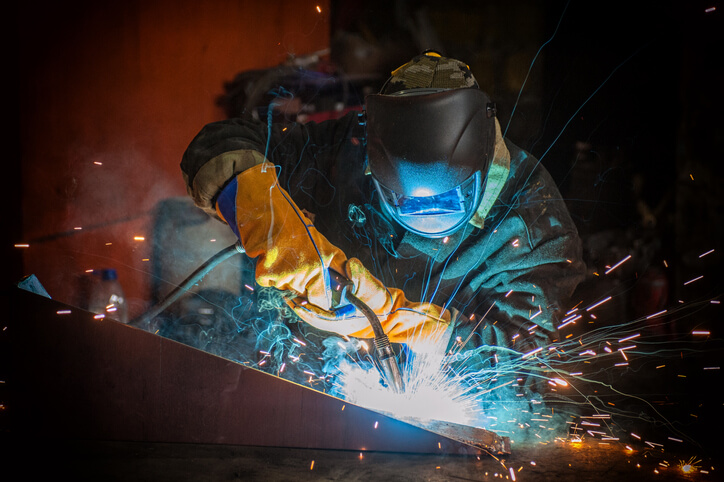
Job security is an essential factor for career seekers interested in the trades. Indeed, before enrolling in career training, you want to know that your skills will be in high demand upon graduation. Welding is an appealing career path for several reasons. It’s a skill that can open doors for you in various industries, including construction, manufacturing, aerospace, and automotive. As many welders retire, job seekers hold on to misconceptions about the role, industry growth continues, and opportunities abound. Keep reading to learn why the skills you’ll learn in our Structural and Pressure Vessel Welder Diploma will make you a sought-after candidate.
1. An Aging Welder Population Has Made Room for New Workers
Like many industries, many retirements among welders have caused a labour gap. According to 2022 data, the average age for welders is 55, meaning that many workers in the industry are preparing for retirement. This is an advantage to you if you’re considering this career path as many positions open up, but returning older welders is not the only contributing factor. When searching for the right career, projected industry growth is also essential.

2. The Rapid Growth of Canada’s Manufacturing Industry
Welder training at North American Trade Schools has an interdisciplinary scope, meaning your skills will help you find work in several industries. One field in particular offers candidates many appealing opportunities.
In Canada, the manufacturing industry has been growing steadily due to the rapid globalization of markets, fewer trade barriers, and high demand. To aid industrial production, welders in the manufacturing industry must join metal pieces together to create a wide array of products, make repairs, and reinforce structures.
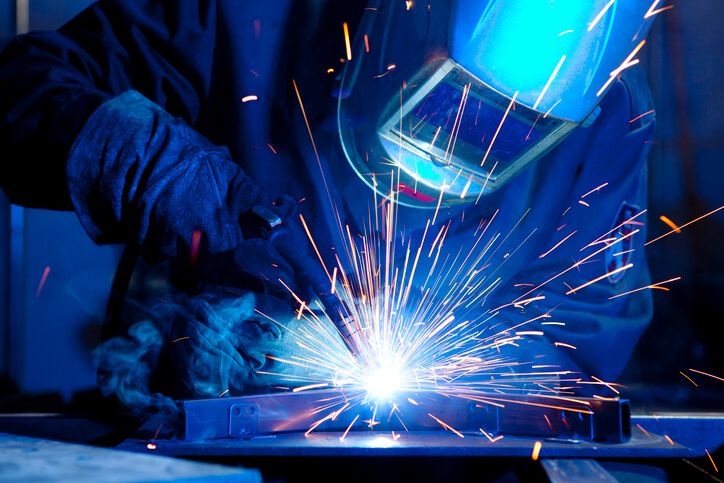
3. Welder Training Opens You Up to Growth and Advancement
You may be wondering, why aren’t new trades workers rushing to fill welding positions? Misconceptions about the industry keep positions available. Some career seekers falsely label welding as a ‘dead-end’ field, but on the contrary, there is plenty of opportunity for continued growth and advancement. Some also believe the work of welders to be monotonous. Still, in reality, welder college leads to opportunities for work in several fields and a wide array of exciting tasks that significantly contribute to Canada’s infrastructure.
Are you ready to start welder courses?
Contact NATS to learn more!
A Day In The Life Of A Construction Millwright Apprentice After Welder College
August 29, 2023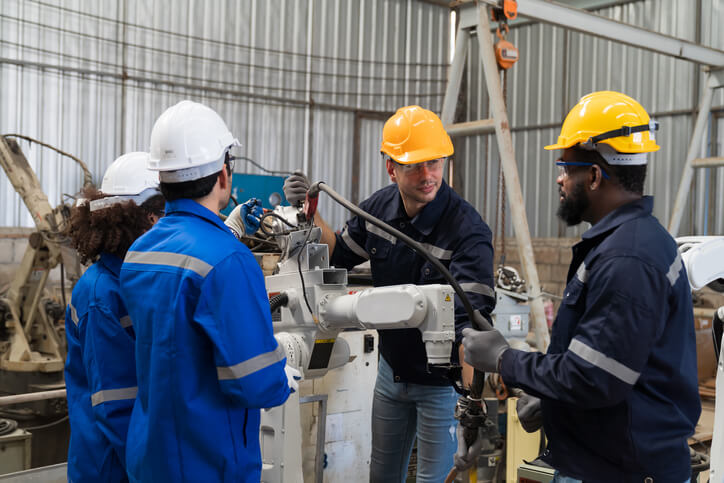
An apprentice millwright is a craftsman trained in high-precision work, specializing in the installation, repair, upkeep, and assembly of machinery in power plants, construction zones, and manufacturing facilities. Daily, these apprentices engage in preventative care for forklifts. They support electricians and experienced millwrights, gaining insights and skills from them. Their responsibilities include conducting routine maintenance on Durco pumps, motors, and cranes, and operating heavy machinery as required.
An apprenticeship is typically a paid position where the individual learns the trade directly on the job, while a pre-apprenticeship prepares individuals with the foundational skills they’ll need once they secure an apprenticeship, acting as a stepping stone. At NATS, our training focuses on imparting those foundational, transferable skills, setting students up for success in either avenue.
Setting out on a professional path after graduating from welder college can be both thrilling and life-changing. If you’re eager to sharpen your skill set and step into the realm of machinery setup and care, the role of a construction millwright apprentice could be the perfect fit for you. In this piece, we’ll delve into a day in the life of a construction millwright apprentice, highlighting their daily duties, growth avenues, and the priceless competencies they gather in their journey post-welder college.
Setting the Stage
A construction millwright apprentice typically starts their day bright and early, usually as the first rays of dawn appear. Before diving into the day’s work, they take a moment to go over the tasks they need to accomplish, mentally preparing for the challenges ahead. Their education at welder college provides a solid foundation, ensuring they are well-equipped for what’s to come. As the day gains momentum, they often begin with crucial first tasks like measuring, cutting, and fitting hangers.
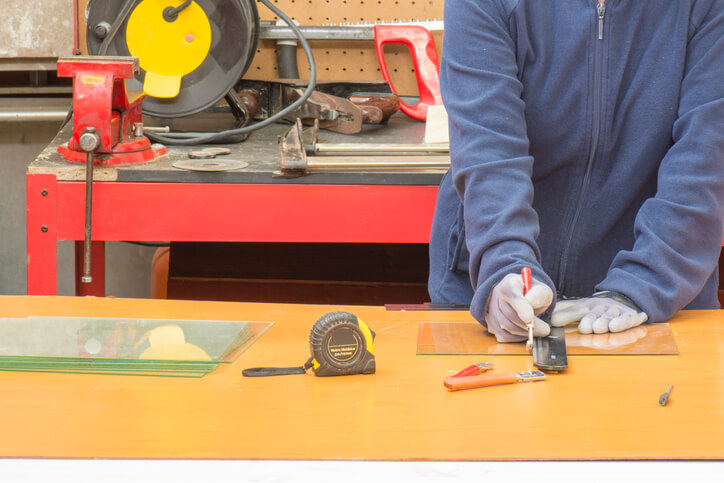
To do this, they rely on hand tools and ladders, applying their skills meticulously. This initial activity not only dictates the flow of the rest of the day but also demands a high level of accuracy and focus—traits they’ve honed to perfection during their welder training.
Mastering the Art of Welding and Equipment Alignment
The midday period offers a stage for the millwright apprentice to display an array of mastered skills, under the watchful eyes of an experienced Construction Millwright. Drawing on the in-depth knowledge attained in welder courses, the apprentice becomes a maestro of metalwork. With proficiency in arc welding, MIG welding, TIG welding, and the delicate art of oxyacetylene cutting, they tackle intricate welding repairs and installations. From restoring the vitality of worn-out pumps, motors, and gearboxes to adeptly aligning hefty machinery with a selection of specialized tools. The apprentice effortlessly merges welding artistry with the multifaceted responsibilities of a millwright. This synergy of skills not only showcases their versatility but also underscores the comprehensive training that shapes their daily operations.

Collaborative Work and Problem-Solving
After a satisfying lunch break, the apprentice gets back to work, joining forces with experienced millwrights and electricians. This teamwork creates a friendly and cooperative environment, where everyone works together. The afternoon is a chance to do different tasks: assisting in making heating and cooling systems better, fixing things very carefully, and even working on big building projects. Some jobs include putting up strong railings, setting up ladders, and making sure pipes and powerful fans are held securely. Every job, whether it seems simple or hard, is a great chance for the apprentice to learn. It’s a time to put what they learned in welder college and millwright training to good and practical use. It’s a mix of classroom learning and real-world practice.
Our Structural and Pressure Vessel Welder Diploma program at NATS is a stepping stone, offering the foundational and transferable skills you need to potentially obtain an apprenticeship or pre-apprenticeship. While we don’t directly offer these positions, our training equips you with the fundamental knowledge and confidence to pursue them while securing potential future employment in the industry.
Are you interested in welder training?
Contact NATS for more information.

When people think about welding, they often picture sparks flying and skilled technicians working with their hands. While manual dexterity and practical skills are undoubtedly crucial in welding, you might be surprised to learn that math plays a vital role in this profession as well.
Mathematics provides the foundation for understanding welding processes, measurements, and calculations, making it an essential skill for those completing welder training. Welders, particularly professional ones, need to possess a strong understanding of various mathematical concepts, including fractions, decimals, geometry, volume, and area. This knowledge is crucial because welding demands exceptional precision to ensure the structural integrity of the resulting welds, especially in applications involving high-pressure vessels.
In this blog post, we will explore the significance of math in welding and why it is essential for aspiring welders to develop a strong mathematical aptitude.
Accurate Measurements and Calculations and Material and Alloy Comprehension
Welding requires precision and accuracy in measurements. From determining the length and angle of a joint to calculating the appropriate welding parameters, accurate measurements are critical to ensuring structural integrity and weld quality. Math skills enable welders to interpret blueprints, understand dimensions, and make precise calculations. Whether it’s determining the required material quantities, calculating heat inputs, or evaluating welding tolerances, math helps welders execute their work with precision and efficiency.
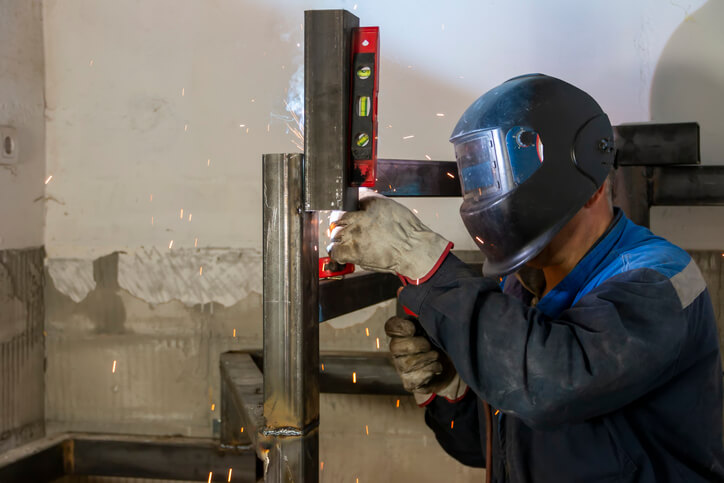
Understanding the properties of different materials and alloys is paramount to welding. Math provides the necessary foundation for comprehending these properties and their behaviour under various welding conditions. Equations related to material strength, thermal expansion, and mechanical properties assist welders in selecting the right welding technique and parameters for a given application. This knowledge helps prevent material distortion, cracking, and other welding defects that can compromise the quality of the weld.
Blueprint Interpretation Made Easy
Blueprints are a universal language in the welding profession. They provide welders with essential information regarding joint design, weld symbols, and dimensions. Proficiency in math allows welders to interpret blueprints accurately, identify critical dimensions, and plan their welding processes accordingly. Understanding geometric shapes and angles is particularly important when working with complex joint configurations. Welders with mathematical proficiency can accurately analyze the blueprint’s information, apply mathematical principles such as trigonometry, and determine the exact angles and dimensions needed for the welds. This attention to detail and mathematical precision ensures that the welds fit precisely, maintaining the desired structural integrity.
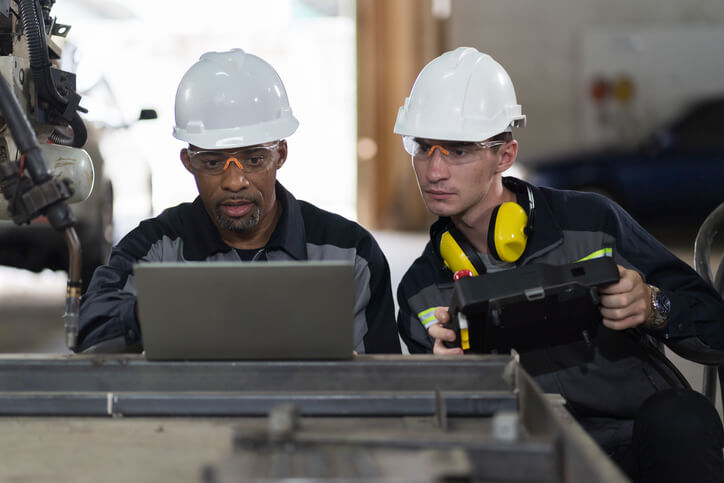
Problem Solving and Troubleshooting Made Easy After Welder Training
Welding often presents challenges that require problem-solving skills. Math, in addition to their welder training, equips welders with the ability to analyze complex situations, apply logical reasoning, and devise effective solutions. For instance, when encountering irregular joint configurations, welders can use math to determine the correct angles and dimensions for their welds. In addition, math proficiency allows welders to troubleshoot welding defects by identifying potential causes and making adjustments to welding parameters.
Mathematics provides a systematic framework for welders to approach challenges, encouraging a methodical and analytical mindset. It enhances their ability to understand the underlying principles of welding processes, enabling them to make informed decisions and take corrective actions when necessary.
Prepare for a Successful Welding Career Through Welder Training With NATS!
The Structural and Pressure Vessel Welder Diploma Program at North American Trade Schools (NATS) is a comprehensive program that provides students with the essential knowledge and practical skills needed to excel in the field of welding. Through hands-on training, students learn various welding techniques, safety protocols, blueprint reading, and welding symbols. The program’s curriculum is designed to meet industry standards and prepare graduates for entry-level welding positions. With experienced instructors, state-of-the-art facilities, and a focus on real-world applications, the welder diploma program at NATS equips students with the expertise and confidence to pursue rewarding careers in welding, contributing to their professional growth and success.
Are you looking for a world-class welder college?
Contact NATS for more information.





